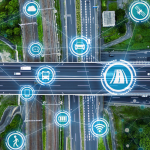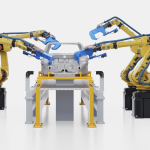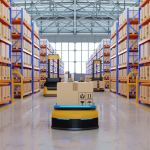The procurement landscape in 2025 is defined by AI, automation, and ESG imperatives. Leaders must adopt bold yet practical strategies to harness this technology-driven transformation and navigate its challenges effectively.
If the procurement technology landscape of 2017 was the opening act, 2025 is the headline performance. Procurement has evolved from being a behind-the-scenes function focused on cost control to a central driver of organizational strategy, resilience, and innovation. With tools like artificial intelligence (AI), automation, and ESG tracking shaping the future, procurement is more dynamic—and more demanding—than ever.
Yet, this isn’t a simple narrative of transformation. The rapid pace of technological advancement comes with real-world challenges: integrating new tools into existing systems, addressing cybersecurity risks, and balancing innovation with operational stability. Leaders must strike a careful balance between ambition and practicality to thrive in this new era.
Procurement’s Journey: From 2017 to 2025
Back in 2017, procurement technology revolved around early digitalization. Cloud-based platforms were gaining traction, and spend analytics tools offered insights into previously opaque processes. Fast forward to today, and the sector has shifted from isolated tools to interconnected ecosystems.
Automation has taken the lead in removing inefficiencies, handling everything from invoice approvals to contract creation. AI, once viewed with skepticism, now powers predictive analytics, helping organizations identify risks and opportunities in real time. Meanwhile, ESG considerations have moved from optional to essential, with procurement teams driving efforts to meet sustainability goals through advanced tracking tools and supplier engagement strategies.
This evolution hasn’t just been about efficiency. It’s about empowering procurement teams to move beyond transactional tasks and into strategic decision-making. The tools now available enable faster, smarter decisions that align procurement with the broader goals of the organization.
Balancing Opportunity and Challenge
While the technology itself is exciting, its implementation is rarely straightforward. Many organizations struggle with fragmented systems and underutilized tools, making integration a daunting task. Legacy infrastructure often resists modernization, and procurement teams face significant challenges when aligning new capabilities with established processes.
Cybersecurity concerns also loom large. As procurement systems become more interconnected, they’re more vulnerable to breaches. Protecting sensitive supplier and organizational data requires robust encryption, secure platforms, and consistent monitoring—a heavy lift for teams already managing other priorities.
Perhaps the biggest challenge, though, lies in ensuring procurement doesn’t lose its human touch. Technology is an enabler, not a replacement for the relationships that define procurement’s value—relationships with suppliers, stakeholders, and cross-functional teams.
A Roadmap to Success in 2025
To successfully navigate this landscape, procurement leaders need a structured, actionable plan. A roadmap provides clarity on how to harness technology while addressing its challenges.
Conduct a Comprehensive Technology Audit
The first step in any roadmap is understanding where you currently stand. Many organizations already have tools and systems in place but aren’t fully utilizing them. A technology audit helps identify inefficiencies, redundant systems, and areas where functionality is lacking, such as supplier risk management or spend visibility.
This process ensures that future investments are targeted and aligned with actual needs rather than duplicating capabilities or overcomplicating workflows. It also highlights which legacy systems can be modernized and which should be replaced to avoid creating bottlenecks.
Align Technology with Organizational Goals
Procurement doesn’t operate in isolation—it must serve broader business objectives. Effective roadmaps prioritize tools that directly contribute to organizational goals. Whether improving supplier diversity, enhancing sustainability efforts, or increasing operational efficiency, every new initiative should connect to measurable outcomes.
This alignment ensures buy-in from stakeholders and demonstrates the value of procurement’s work across the business. For example, if supply chain resilience is a top priority, predictive analytics tools that mitigate disruptions and reduce lead times can deliver immediate and tangible benefits.
Invest in Talent and Change Management
The best tools in the world are ineffective without a skilled and adaptive team to use them. Procurement professionals in 2025 need both technical expertise and strategic acumen. Training programs focused on AI, data analytics, and ESG criteria can equip teams with the skills to navigate this rapidly evolving landscape.
Equally important is change management. New technologies often encounter resistance, and it’s essential to guide teams through the transition with clear communication, practical support, and ongoing learning opportunities. This ensures smooth adoption and maximizes the return on technology investments.
Embed ESG Goals Into Procurement Strategy
Sustainability is no longer an add-on—it’s a core component of procurement’s role. Embedding ESG considerations into your roadmap ensures compliance, improves stakeholder trust, and strengthens supplier relationships.
This can include implementing systems that track and report supplier emissions, prioritizing partnerships with ethically aligned suppliers, and using technology to ensure transparency throughout the supply chain. ESG-driven procurement isn’t just about meeting regulatory requirements; it’s about creating competitive advantages that align with consumer and investor expectations.
Balancing Vision and Practicality
The procurement function in 2025 is a study in contrasts. It’s more strategic yet more complex, more technologically advanced yet more reliant on human insight. Leaders must embrace these dynamics by making thoughtful, deliberate decisions about where and how to innovate.
This doesn’t mean chasing every new tool or trend. Instead, it’s about focusing on the areas that will deliver the greatest value, whether that’s improving supplier relationships, enhancing risk management, or meeting ambitious ESG targets.
The roadmap isn’t a one-size-fits-all solution—it’s a framework for tailoring technology to your organization’s unique needs. By auditing systems, aligning with business priorities, upskilling your team, and embedding ESG goals, procurement leaders can unlock the full potential of this transformative moment.
2025 is here, and the opportunities are immense, if leaders rise to chart their course forward. With a clear plan, a strong team, and the right tools, the future is not only achievable but well within reach.







